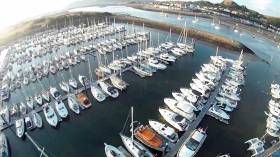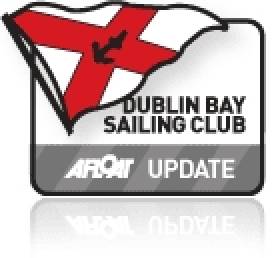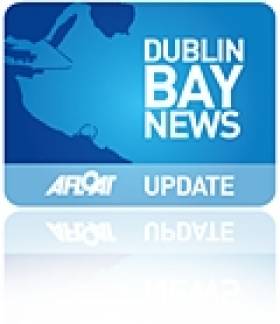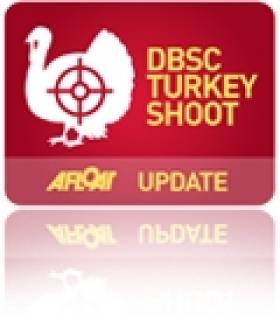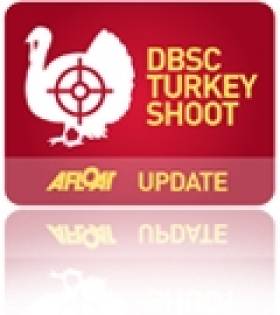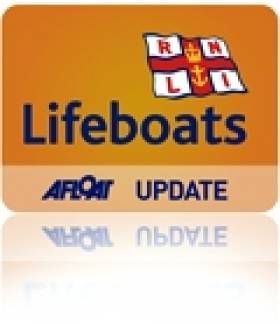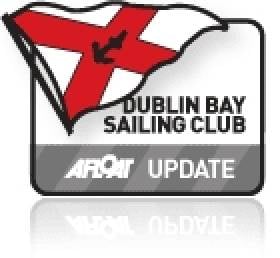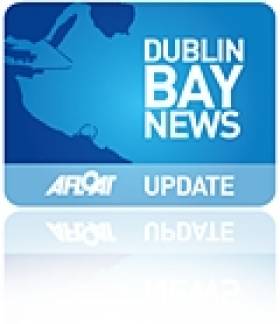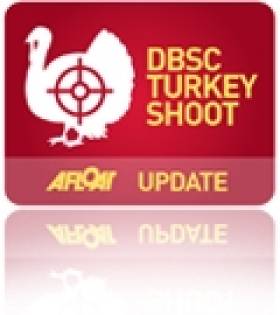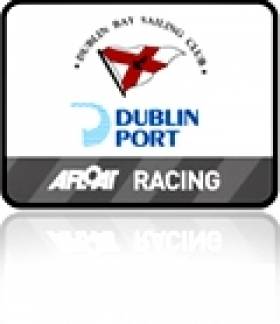Displaying items by tag: INSC
#WaterSafety - Alistair Rumball of the Irish National Sailing Club shares a story from a friend that serves as a timely reminder of the importance of keeping vigilant whenever on or near the water.
Alistair’s friend was mooring his Jeanneau Sun Odyssey 35 for the night at Conwy Quays in North Wales when tiredness got the better of him as he manoeuvred the boat into the narrow berth available.
Forgetting the dinghy tied to his stern, he allowed the smaller vessel to wedge between his starboard and the pontoon, with the port bow leaning against the fender of the neighbouring boat.
“Having untied the line I somehow decided to head back on to the pontoon in order to manoeuvre the dinghy out of the way, but in my haste I attempted to step straight from the transom to the pontoon. It didn’t work," he writes.
“Of course I snagged myself on the line holding the yacht to the pontoon. One foot just about made it to the pontoon but, now overbalancing because I have tripped on the line, I ended up in the water.”
Luckily for Alistair’s friend, his lifejacket sprang into action, and he was only underwater “for perhaps a split second” before the device fully inflated.
Hauling himself out of the water was a different matter, however, as his choice of boots — now flooded with marina water — instead of deck shoes made the move exceedingly difficult.
The INSC website has more on the story HERE.
Only Two Seconds Separates 1720s at DBSC Spring Chicken Series
#dbsc – Greeted with a foggy Dublin Bay yesterday morning and a gentle breeze due to a huge high pressure sitting over Ireland, team INSS were one of the first boats to head out to the DBSC Spring Chicken race course in a lovely 10-12 knots of breeze writes Kenneth Rumball. Our crew were keen to get to grips with the intricacies of handling the mast head spinnaker on our race prepared 1720 prior to the start of racing, giving us the best possible opportunity to win the day's race.
A great race course was set with a start line just off the harbour mouth and a 'Z' style course incorporating a laid weather mark, yellow mark as gybe mark, another laid gybe mark and then the pin end of the line as the leeward which we had to round to starboard. The 1720 fleet as always started in the third start with a biased committee boat end. Team INSS gave a lesson on how to control the fleet on a committee boat start and won the highly competitive start.
Up the first beat Merlin pulled ahead due to her dominant speed with Third Time Lucky also having a speed edge. Lady A from the RIYC rounded in third place with Team INSS rounding in fourth. A fumbled hoist saw Team INSS catching a few mackerel n anticipation for lunch, however the tem didn't lose too much and was soon catching the rest of the fleet.
On approach to the yellow mark there were many discussion on whether or not the 1720s could hold their kite on the tight reach, the small Sonata 'Asterix' had showed the fleet it can be done. All the 1720s apart from Merlin took the risk and tried to hold the kites which was to be a mistake. Merlin used the advantage and increased their lead as the remainder of the fleet struggled to douse kites on the fetch.
Team INSS also benefitted from some slick spinnaker work and was up to second place by the second gybe mark.
Despite their best efforts TEAM INSS could not manage to hold off Lady A even though at the finish there was barely two seconds between the hooters as the two 1720s cross the line.
Back ashore in the INSS centre we had a busy day with a full First Aid course for dinghy instructors as well as an ISA Dinghy Instructor Pre-Entry Assessment run by ISA Regional Development Officer Ciaran Murphy where all 7 candidates passed.
The afternoon saw our dinghy sailors out sailing in the DMYC Frostbites.
Big Winds Don't Deter INSS. No Racing, No Problem!
#inss – A blustery forecast and strong winds passing through Dun Laoghaire on Saturday night was not a good omen for the DBSC Turkey Shoot on Sunday morning. Indeed the code flags N over A were flying from the committee boat Freebird from as early as race skipper Alexander Rumball got to his boat, circa 9am writes Kenneth Rumball. What to do for our race training candidates on a Sunday morning was of course the next question?
Well, let's go sailing! Using our smaller fleet of dayboats, our modified Squibs, race training skipper Kenneth Rumball assumed the role as principal race officer, with Glyn Williams and Alexander Rumball assisting in coaching and mark laying. We had a few guests including Peter Hall and Noel Butler both who learnt to sail in the INSS but now race the 34.7 Adelie which also competes in the Turkey Shoot coming along to try their hand at racing in the squibs.
Laying a triangular course inside the harbour we had a visit from some of other competitors from the Royal St George who came out in a RIB to check were we okay as the conditions were quite rough to go sailing in.
We had three fantastic races with all crews beaming afterwards from having such a thrilling sail and in some cases clearing some sore heads from the antics of the night before!
A similar tale befell the DMYC Frostbite Series with racing also called off early due to the prevailing weather. Rather than bring our dinghy sailors out in the squibs, three of the INSS instructors, Kenneth and Alexander Rumball and Conor Corson took a Fireball dinghy and laser dinghy out for a spin. This activity was not just for fun but to show our junior sailors how to handle dinghies in the higher winds, using our new state fo the art 6.5m RIB, Glyn Williams brought 6 of our junior sailors out to watch both dinghies in action. A video of the day is available on the INSS youtube page.
A worthwhile and fun experience for instructors and sailors alike.
INSC Sportsboat Team Suffer in DBSC Turkey Shoot But Thrive in DMYC Dinghy Frostbite
#dbscturkeyshoot – It was a tough day for INSC teams in DBSC Turkey Shoot Race three but a better day for the INSC dinghy teams in the DMYC Frostbite series yesterday afternoon. From last week's dominant performance in the Turkey Shoot, both INSC teams were in top spirits heading out into a sloppy north easterly race track with wind against tide and around 10-15 kts of wind speed. A shifty breeze was changing the bias of the line rapidly and despite a start where most were over, the team got away in the middle of the bunch on the more port side of the ine.
Up the beat, INSC1 (Kenneth Rumball) went initially left but then came out to the right hand side while INSC2 (Alexander Rumball) held on out to the left a bit longer coming into the weather mark a bit below the port layline. It was the closest race so far in the 1720 fleet racing on the bay with Brain Matthews around first on the NYC boat, followed by INSC2, then INSC 1 with a tight gap of the Colin Byrne's entry from the RIYC rounding just below INSC1 and Niall O'Neill and Martin Byrne sailing Merlin from the Royal St George just behind.
On the downhill leg of the two lap windward leeward, Brian Matthews and team got away cleanly allowing them to gybe out to the left early followed quickly by Lady A from the RIYC and INSC2. At this stage Martin Byrne used his prior 1720 experience, powering through at high angles to get up to third by the next bottom mark. The usual tight 1720 racing followed on afterwards with small place changing but tow boats in particular gained mostly being Martin Byrne and Niall O'Neill.
INSC1 suffered on poor spinnaker work with a wrapped kite on the next downhill putting them at the back off the 1720 pack. Despite this, some great sailing and surfing in cracking conditions had a smile on all crews on the way home after another faultless race by the DBSC race committee team.
Moving to the afternoon, our INSC teams took to the water for the DMYC frostbite series in the INSC dinghy fleet. A smart move by Olivier Prouveur and team to run the race outside the harbour in 'cleaner' breeze gave all a five lap trapezoid style race track. Junior racers from the INSC were competing primarily in the PY fleet and all enjoyed considerable success compared to the initial race over two years ago.
Race coaches Alexander and Kenneth were competing in their boats in the RS400 and Fireball class respectively. Kenneth and crew Brian Byrne made it two from two while Alexander managed a credible 3rd in his first race of the series.
INSC 1720 Sportboat Claims Line Honours in Second DBSC Turkey Shoot Race
#dbscturkeyshoot – With the tweets from the Dublin Bay Buoy giving an average wind speed of 10kts and gusts of 16kts, the two INSC teams (INSC1 skippered by Kenneth Rumball, INSC2 skippered by Alexander Rumball) headed out to the second DBSC Turkey Shoot race with smiling crews after the baptism of fire from the previous week writes Kenny Rumball. Such light southerly winds meant most 1720s thumbed a tow from passing engine driven yachts to hitch a lift to the outer harbour. As the training days for both INSC teams were mostly blown out, the two teams took advantage of the lighter conditions to practise a few hoists gybes and drops of the bigger mast head spinnakers on the 1720s.
Shifty conditions gave Fintan Cairns and his team on Freebird a tricky course to lay, so shifty that between the second and third start, there was almost a 50 degree shift from the south to south east turning a square start line into a heavily biased pin end line inside the sequence. INSC2 lined up for a run in on port tack at the pin end whereas INSC1 took a more conservative start on starboard tack near the pin end. INSC2 pulled off a great start but with a narrow infringement with a RIYC boat forcing the INSC2 team to do a few penalty turns. INSC1 got buried in the line and immediately set about rolling into a few tacks in the shifty conditions to pull back into the race. It was anybody's guess as to what was the best track up the beat, INSC2 went out towards the left side with one of the Royal St George 1720s, Merlin, helmed by Ben Cooke and the National Yacht Club entry helmed by Brian Matthews. INSC1 took a route more up the middle of the track availing of the puffs and shifts coming in from the right hand side of the beat. The boats on the left ended up in a hole near the top mark with the other Royal St George entry helmed by Hugh Butler storming in on the starboard lay line in a lovely little bit of pressure. INSC1 tacked out to fall in behind the Royal St. George boat around the top mark, a quick hoist in almost no wind on the top reach allowed INSC1 to roll most boats by the next mark on the trapezoid course. At this stage INSC1 had managed to squeeze through and find some breeze to gain a dominant lead over the rest of the fleet. INSC2 after struggling in the hole on the top left of the beat had managed to work through the fleet in the downwind legs using some smart sailing to get up into the top end of the fleet.
INSC1 continued with its lead massively reduced up the last beat as the breeze died off again towards the top of the course but still managed to claim line honours followed in a very close finish between the NYC's Brian Matthews and the RstGYC's team lead by Ben Cooke with Brian Matthews and team claiming the narrow spot for second over the water.
The INSC race team then returned to the water in a horrendous downpour before the start of the DMYC Frostbite series which was unfortunately abandoned today due to lack of wind.
#sailathon – Had you been walking the East or West Pier of Dun Laoghaire Harbour on Saturday morning around 9pm you would have seen an INSC 1720 rigged as a committee boat make its way out into Dun Laoghaire Harbour's training area. This was to be the committee and mother ship for the Irish National Sailing Schools annual charity Sail-A-Thon, this year in aid of the Royal National Lifeboat Institution. Approximately an hour later at 10am 75 young sailors aged from as young as 7years took to the waters of Dun Laoghaire Harbour and made their way up to the main harbour. Some INSS instructors took to the piers both East and West with collection buckets to show why so many young sailors were out on the waters of Dun Laoghaire Harbour.
To break up the day there were various games and races throughout the day as the strong easterly winds built up during the day. Our keen sailors took a short break for lunch as many needed to re-energise before heading back out for the afternoon stint.
To wrap up the day, members of the Dun Laoghaire lifeboat unit called in to allow the children to ask them questions and also to be presented with the cheque for the amount raised on the day. There was a BBQ in full swing with many parents of the children also coming down to meet the lifeboat crew.
The presented cheque was €1,855 for the day with many more sponsorship forms and money still to be collected.
Team INSC 1720 Video at DBSC's Spring Chicken Series
#insc – 1720 sportsboat action on Dublin Bay in this new short vid from Team INSC that took part in the Dublin Bay Sailing Club (DBSC) Rathfarnham Ford Spring Chicken Series 2014. Full results here.
Competition Keeps Raising The Standard In INSC Spring Series
#INSC - Wind, wind and more wind greeted the participants in the Rathfarnham Ford Dublin Bay Spring Series at the weekend, writes Kenneth Rumball.
This is by far the windiest winter I have known so far with lots of sailing cancelled. Nonetheless the wind gods usually shone on Dublin Bay on Sunday mornings and allowed wind speeds to drop under the usual 40+ knots to allow the two INSC race training boats to compete in the Spring Series.
We weren’t always so lucky with two Sundays' racing lost due to the high winds. Chief organiser Fintan Cairns made an excellent decision to extend the series to run an extra race on 23 March to make up for one of the lost days.
The high winds did not allow the two team INSC boats, helmed and skippered by Kenneth Rumball and Alexander Rumball, to get out and do some pre-event training in their 1720 sportsboats prior to the first race of the series.
The team changed the configuration of their boats somewhat for this series by leaving the Dacron teaching sails on the dock and through some clever thinking modified 1720 class ‘Club’ jibs were able to be mounted on the Harken cruising foils usually used for teaching. Kevlar mainsails were also added in the drive to make the boats more competitive than ever. The signature navy antifouling remained in place to keep the boats from going too fast!
Most of the clients on the two boats had already sailed with team INSC in the DBSC Turkey Shoot Series and in the DBSC Winter Series last winter, so the lost training day did not hamper the teams as much as we had thought it would.
Due to the fact the INSC race teams had done some racing with us before meant we could push our boats harder than before, with our crews definitely making the jump from novice racer to seasoned 1720 crew. We had some fantastic races with both boats honing down wind with the 1720 mast head spinnakers and excellent crew work keeping the hull under the mast.
Screaming by other cruiser-racers with mouths ajar as to the speeds the INSC teams were doing downwind, the GPS on one boat saw a max speed of 16kts one day in a big gust.
Both INSC teams were always at the front of fleet, fighting for line honours. In fact in most races the only boats to place ahead of INSC2 were Wow, the Farr 42, and other much larger boats such as J109s.
The final day of Sunday 23 March saw both boats leaving the pontoons with gusts out in the bay of 30-plus knots. Both sets of crews were a little rusty having had a ‘rest weekend’ over the St Patrick's Day break and nerves were a little high on both boats. This, coupled with a long run from the yellow outfall mark off the West Pier down to the Muglins, meant both boats knew they would have to push hard down-wind to pass the fleet.
And push they did! INSC 1, INSC 2 and Déjà vu all rounded the top mark very closely in that order. A tight top reach mean the kites stayed in the ships, however on gybing around the outfall mark, INSC 2 hoisted their yellow afterburner fractional kite and took off. INSC 1 was a little later behind but had the kite up as soon as possible, with the apparent wind shooting forwards, the two boats along with RIYC2 another 1720, blasted to the Muglins.
By the Muglins, INSC 2 had taken the fleet apart from one boat with INSC 1 and RIYC 2 on their heels. Up the final beat home, INSC 1 and RIYC 2 caught close to INSC 2 with a big left shift. However INSC 2 took line honours with RIYC 2 and INSC 1 on their heels!
In the overall results, INSC 1 finished up seventh with INSC 2 in tenth place - both boats claiming a top 10 finish.
Another fantastic race training programme and what is being dubbed the best race training programme in the bay will continue on Tuesday nights into the summer. If you want to learn how to crew a race boat, check out www.insc.ie.
Irish National Sailing Club (INSC) Compete at DBSC Turkey Shoot
#dbsc– The Irish National Sailing Club (INSC) competed in the Rathfarnham Ford sponsored DBSC Turkey Shoot Series 2013. Here, club skipper Kenneth Rumball (also the Irish Fireball dinghy champion), reviews the school's performance and concludes how evenly both boats were matched over the seven race series.
Sunday the 3rd of November and the two Irish National Sailing Club race teams, INSC 1 skippered by Alexander Rumball and INSC2 skippered by Kenneth Rumball made their way across to the Royal Irish Yacht Club where the boats were on the pontoons ready for the first race of the 2013 Rathfarnham Ford Turkey Shoot series.
With an awful forecast and many crews wondering if we would actually be racing, our teams rather nervously readied the boats to head out in a steady 25-30kts. Being one of the first boats to launch, we headed out and blasted out to wards the committee boat with only our mainsails up followed later by the rest of the fleet. This was our first race for our crews with absolutely no prior training with their respective helms in the 1720s due to rough weather. As such an initial race in 30kts in a 1720 was more a case of holding on and just getting around the race track, not even a mention of spinnakers!
Race two on the 10th of November greeted us with conditions more suited to the 1720, a gentle 12kts from the South West decreasing during the morning. This allowed us to really concentrate on the racing and get all crews used to the spinnakers and how to handle them. In the lighter conditions, we were more up towards to the top of the pack chasing for line honours.
Race three and four saw both boats improving all the time. Both teams were now fighting with the like of Prof in the J70 and Déjà vu the 1720 from the NYC in original form. This tight racing in the light airs was brilliant for our crews, really seeing what the good sailors at the top end of the fleet are aiming towards. Hard lessons were learnt and concentration really was key to success in these races. There was a healthy rivalry developing between the younger crew on INSC1 and wiser crew on INSC2. Both crews were becoming constantly aware of where the other boats were. At the end of race four, both boats were lying joint 9th overall!
The fifth race of the series saw Fintan and his team send us off on a short upwind followed by a long downwind with the Muglins being the leeward mark. INSC1 took an early lead over INSC2 on this long spinnaker leg down to the Muglins, getting towards it Kenneth on INSC2 was still a bit behind but wanted to get ahead. Some great spinnaker work by the crew with a flawless kiwi drop of the kite while the helm took such a tight line around the island, one could have potentially reached out over the side of the boat and touched the rock saw us sail inside INSC2 and Déjà vu amongst others. A short beat up towards Loreto Dalkey with a strong ebb tide saw a great corss tacking phase between INSC2 and Mermaid, the eventual overall winner. INSC1 stayed close in phase but after a great comeback it was INSC2 on top in joint 4th and INSC back in unlucky 13th.
Lots to play for in the last two races, race six saw both boats and their main rivals sporting an OCS on the scoreboard so nothing too much to report from that race. Our final race last Sunday was according to the forecast to be potentially blown out, however hugely light conditions off the start line saw us sailing with two crew situated on the leeward side of the boat! Tight racing between all the 1720s and the J70 had us all bunched together at the top mark. All 1720s were sporting the smaller 'chicken' or fractional kites due to the sever forecast. A good hoist followed by a faulty slef tripping fractional kite halyard meant INSC2 suffered a severe setback, retrieveing their kite from the sea whil rushing to rig the mast head. INSC1 took control of the race on the next downwind and on the next tricky beat they at one stage took the lead in the race. Rounding the next top mark, INSC2 had been catching up and INSC1 took the go big or go home approach, with both boats throwing the mast head kites up in a strengthening breeze. Good speeds and big smiles as both crews had the most memorable downwind ride of the series.
Here is a short view from one of our crews, Pat;
'Throwing 5 people together, on a windy October Sunday morning, who had never me each other before, with a 40 year age gap range, was the start of a marvellous 7 Sunday expose to racing on a 1720 in Dublin Bay. Most of us had limited knowledge of sailing so the initial drills and exercises were somewhat daunting especially when it came to flying the kite.
By the end of the race series we had learned a lot, had become dab hands at handling kites and got to know each other as if we had been ship mates for years'.
With INSC1 finishing 11th and INSC2 13th in the overall results, it shows how evenly the boats were matched. Both crews had an excellent time on their skippers wish to see them bringing their skills onto other boats in Dun Laoghaire.
The INSC will have boats entered in the DBSC Spring Chicken series so if you want to experience racing at the top end of the fleet followed by weekly email de-briefs accompanied by top tricks, hints and tips, don't wait and sign up as spaces are limited!
Wind Fills in on Dublin Bay for DBSC Spring Chicken Race
#dbsc – Race 5 of the Dublin Bay Spring Series, would it happen for the Irish National Sailing Club (INSC) crews asked Instructor/Skipper Kenneth Rumball yesterday
Certainly driving down, the coast road to Dun Laoghaire, it was questionable, Dublin Bay was a glassy millpond.
None the less, we rigged up and drifted/sailed out into a waiting fleet in the bay. Freebird had gone off upwind to lay a weather mark as we patiently waited for the breeze to fill in.
Fill in it did and the starting sequence got underway. INSC1 hung around the committee boat while INSC2 & INSC3 were down the pin end. After some confusion caused entirely by the skippers, all boats got underway with all boats late for the start. INSC1s skipper had to be reminded the rest of his fleet had started! Whoops, thinking too much.
The first beat was patchy with INSC1 taking an initial route up the middle of the course while INSC2 chose a one tack wonder out to the right of the course! INSC3 took a route more up the left of the course! It turns out INSC2 had the best route, getting into the building Easterly breeze, INSC1 moved from the middle to the right of the course. At the top mark, it was INSC1 & INSC2 neck in neck at the top mark ahead of the fleet who were now getting into the breeze. INSC3 was struggling up the beat but powering past the rest of the fleet from start 3. INSC1 took a route down the right of the run while INSC2 went down the left of the run. No major gains or losses for either boat.
However at the bottom mark, the J109 Ruth did INSC1 a massive favour by sailing on top of INSC2. This enabled INSC1 to gain back their advantage. A close tacking duel between the two boats up the rest of the right of the beat was hard work for all crews.
The finish was to be at the top of this beat, we all finished in a great building breeze with the sun just coming out. If DBSC arranged the weather, it could be related to a Carlsberg advertisement. INSC1 was second across the line to the J109 Ruth with INSC2 6th across the line, with Orna and the A35 Another Adventure getting in their way.


























